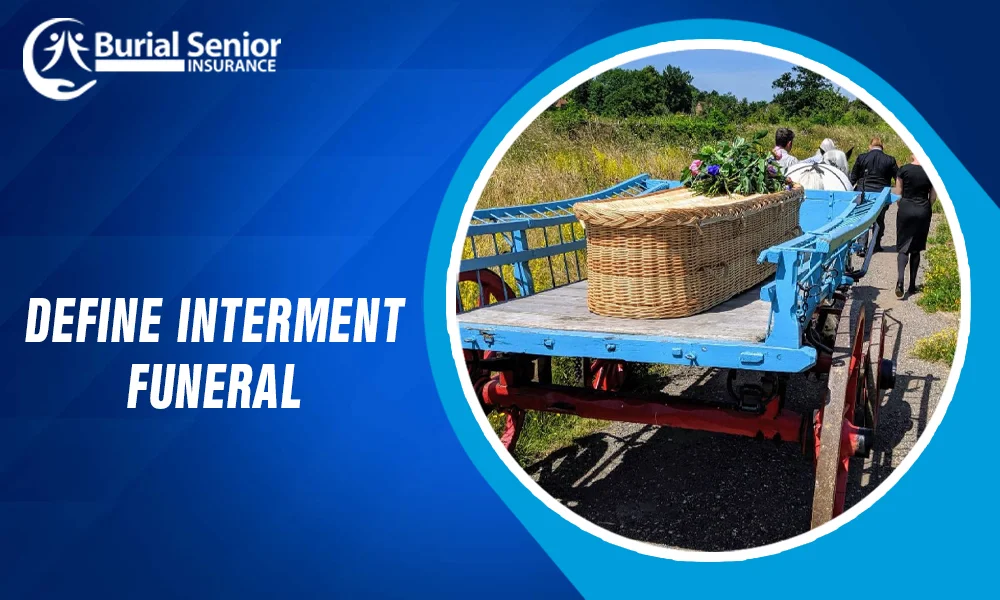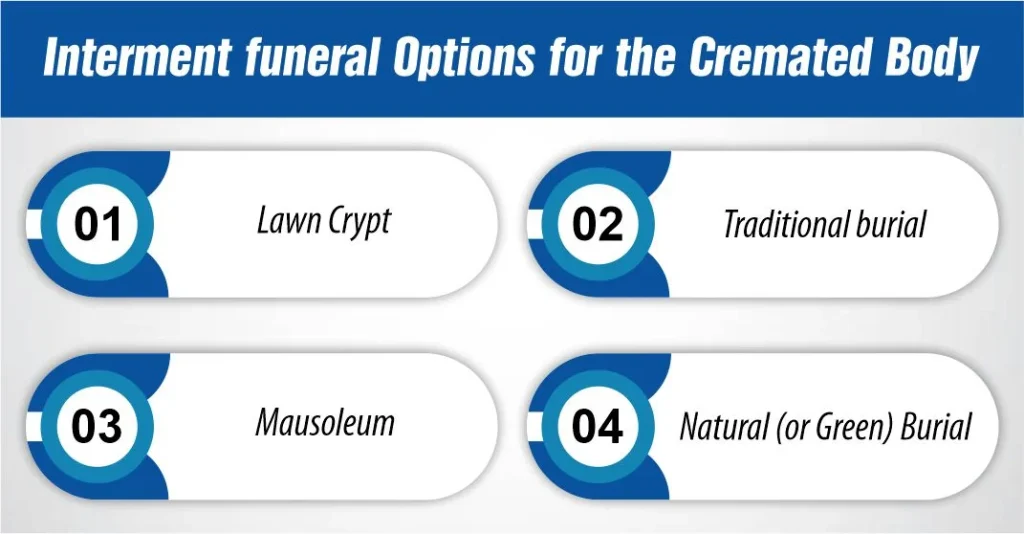Last Updated on: March 14, 2025
Reviewed by Kyle Wilson

Have you ever wondered about the different ways we honor our loved ones after they pass away? Among the various funeral practices, define interment funeral as a timeless tradition that holds deep cultural and emotional significance. But what exactly is an interment funeral, and why does it play such an important role in the way we say our final goodbyes? Understanding this practice can provide insight into how we celebrate and memorialize life, even in the face of loss.
Customized Options Await
What is interment? Put simply, it’s when we place someone who’s died in their final resting place. Define interment funeral in a way that it is a process of burying a deceased person’s body in the ground, usually within a cemetery. This could be a traditional burial or a natural burial, where a coffin is lowered into the ground. But nowadays, when people talk about interment, they’re often talking about the interment of ashes. There are lots of ways that ashes can be interred. We’ll look at some of your options below.
It’s good to know that the meaning of interment is different from “internment”. It’s easy to mix the two up because they sound the same and have very similar spellings. Internment (with an “n” in the middle) is when somebody is placed in prison, usually within the military.
The procedure for the interment funeral ashes starts with finding a permanent location.
Possible locations include:

Essentially, a lawn crypt is a type of underground mausoleum. It’s built deeper into the ground and can house multiple caskets. Often made of concrete, a lawn crypt possesses a drainage system, which protects the grave’s contents from the elements. In some cases, families are all buried together, but it’s not a requirement. Make sure to ask a cemetery representative if they use individual grave markers or just one for everyone buried in the lawn crypt.
In traditional burial, the body is interred whole and may be preserved by employing embalming so that the deceased can be displayed before the funeral rites and burial rites. Before burial, the cemetery prepares the location by digging a hole at the grave and may then place a grave liner or burial vault in the hole. The casket is then placed in the grave by the cemetery grounds crew after the committal service and more soil is then added to the grave. Finally, a tombstone with an epitaph is placed at the site as a form of honoring the deceased
A mausoleum is an above-ground structure used when the remains are placed in a casket. They provide individual methods for remembering your loved one, such as name etchings, nameplates, and vases for flowers. A mausoleum commonly contains individual or companion niches and safeguards the body from the environment. It is made of community mausoleum and private mausoleum kinds. In most situations, a private mausoleum is far more costly. Mausoleums are ideal for people who wish to have their remains buried with their loved ones in their tomb.
There is another form of full-body interment that is natural or green burial. Green and natural burials are an attempt to mimic the natural process of decomposition as closely as possible. The main differences are two-fold: The main differences are two-fold:
1) Green burial does not allow for any type of embalming, while the cemetery ground is approved merely for green burial.
2) Green burials can only happen on very specific areas of land while a natural burial can happen on any piece of private property or any cemetery that permits it.
A few lesser-used interment options are:
A burial vault is a structure built within the grave that holds one or many remains. An example of this would be a mausoleum.
A mausoleum is essentially a large tomb. It is a monument, often made from stone, designed to house the remains of one or several individuals above ground. Like burials, mausoleums commonly contain personal mementos to markers related to the deceased.
There are many types of mausoleums. Common ones include:
Entering the final arrangements of the cremated body, the most common choice is a columbarium. Columbaria are made of a large number of small spaces also referred to as shelves that contain one casket or urn. Every grave is usually provided with a plaque which is an engraved tombstone that contains the names, dates of life, and an inscription (if the mourners desire). All Columbaria are standard and public, but a family may lease a larger niche so that more than one urn can be placed side by side.
There is also the option to insert an urn instead of placing it on a columbarium shelf. Whereas some have beautifully decorated urn gardens, others provide burial lots that are almost similar to the regular burial ones. A traditional plot can contain several cremated remains or can accommodate a casket and an urn, due to regulations of a particular cemetery. In urn burial just as in conventional burial, there is a need for an outer burial container. The third form of burial associated with urn burial is green burial. Natural burial can also take place in a green cemetery with biodegradable urns without an outer burial container.
It is allowed to bring the cremated body of the deceased to a specific place (it is advisable to consult the legislation and requirements for that place) or go to a scattering area, which is usually a picturesque territory connected with a cemetery. A scattering garden makes a burial ground for creating a permanent physical memory so that family and friends have a place where they can be close to the departed person. Therefore, if you are to spread all the ashes of a deceased loved one, it would be important to prepare yourself emotionally for the experience. There are some who may be surprised that all that was left of their loved one suddenly disappears.
As you can make out from the above descriptions, you have several interment options with you. Depending on your wishes and the needs of your family, you can choose the one that best suits everybody. Whichever one you decide to take, always ensure that you set aside a place for burial so that people, especially your friends, family, and generations to come can visit the site, remember, and even pay their respect for the life that has been lived.
Traditional interment ceremonies usually follow this basic structure:
However, these are guidelines only—the exact details of how your interment of ashes family ceremony will proceed are entirely up to you. If you’re not quite sure what you’d like, here are a few ideas to help ease the burden of the planning process.
Flowers and candles are common choices for interment funeral services, but there are other options you may want to include in addition to, or place of, these elements, such as:
As we Define interment funeral , it becomes clear that an interment funeral is more than just a burial; it is a profound act of remembrance and respect. By asking ourselves what an interment funeral truly represents, we can better appreciate the traditions that connect us to our past and help us honor the lives that have touched our hearts. How will you choose to remember and celebrate those who have left a lasting impact on your life?
References:
Senior Writer & Licensed Life Insurance Agent
Iqra is a dynamic and insightful senior writer with a passion for life insurance and financial planning. With over 8 years of hands-on experience in the insurance industry, Iqra has earned a reputation for delivering clear, actionable advice that empowers individuals to make informed decisions about their financial future. At Burial Senior Insurance, she not only excels as a licensed insurance agent but also as a trusted guide who has successfully advised over +1500 clients, helping them navigate the often complex world of life insurance and annuities. Her articles have been featured in top-tier financial publications, making her a respected voice in the industry.

Burial Senior Insurance provides information and services related to burial insurance for senior citizens, including policy options and end-of-life support services.
Copyright © Burial Senior Insurance 2025. All Right Reserved.

Get Free Life Insurance Quotes